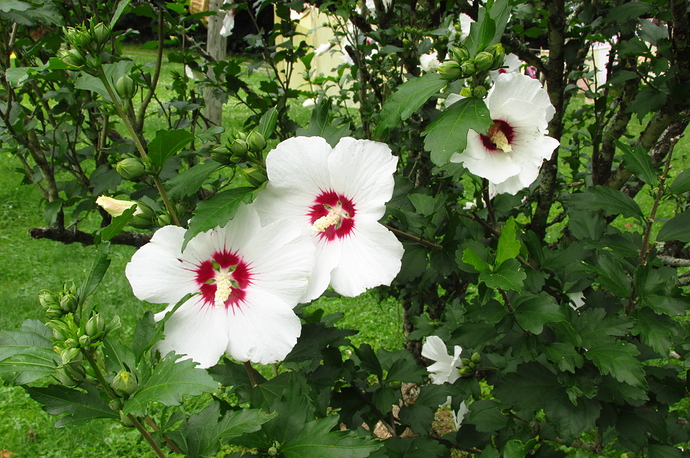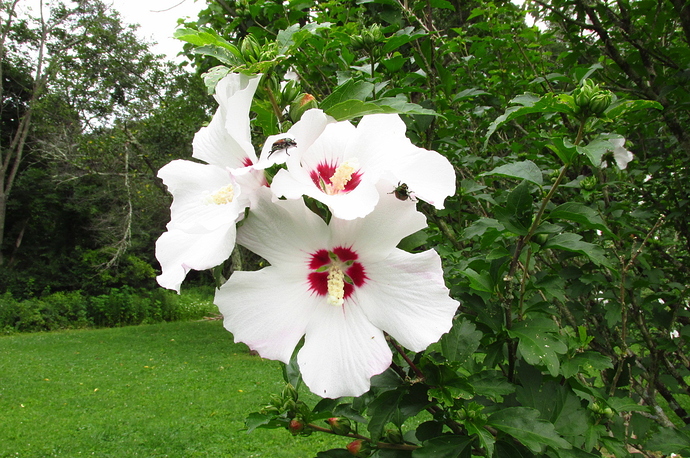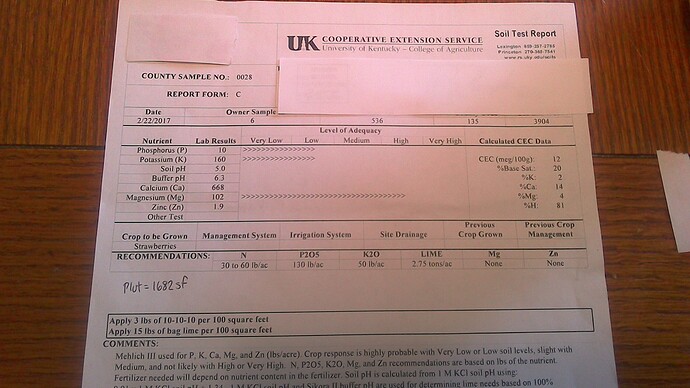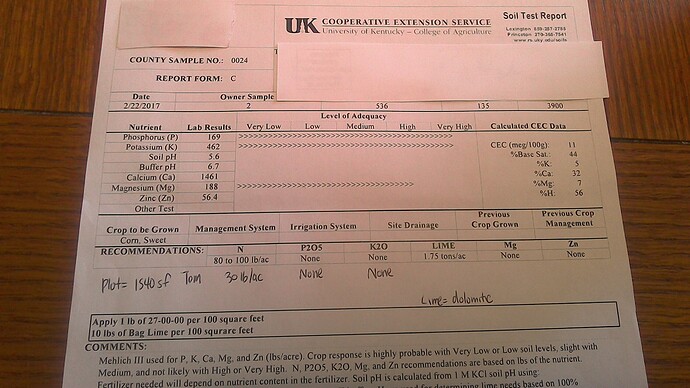It is called pepper maggot and it is not picky which types of peppers the fly stings and lays eggs in. They burrow out of the pepper and pupate (sp) in the soil and start the cycle over in the spring. They are why I am kind of giving up on peppers.
Yeah I remember that. I like them a lot. So trying to find the best ones for here.It’s my wife that really likes them, I do too, I’m also a fan of deep red tomatoes. Something about the flavor. It seems to me some connection between color and flavor. [quote=“subdood_ky_z6b, post:100, topic:9320”]
Would a calcitic lime (>50% Ca?, <5% Mg?), be better for my situation?
[/quote]
Yeah I think so, I would use that.
Thank you @thepodpiper for the information.
I have not much problems with them (yet) maybe because I pick the peppers before the maggot go back to the soil and disrupt their cycle. Maybe if you can protect you peppers with the bags like we do with apples you can reduce their numbers over couple of years.
I grow peppers now in the screen house because of the pepper maggot. I had two structures and one screen net to protect cucumbers from cucumber beetles and rotated them every year. Now I bought another screen net and rotate cucumbers with peppers every year. Helps a lot.
Subdood - I don’t study the agronomy of it, so I’m completely useless for providing recommendations for you. Maybe I could whip out my old-school spherical cow engineering math skills if you posted a photo of your soil analysis and tell you how much much of the two materials you would need to add. Did the extension service not provide recommendations?
I really don’t think adding the dolomitic lime would be of much harm. The stuff is gonna take a while to work anyways.
I think the cation exchange capacity is probably in units of meq/100 g. I’m not sure how texture plays into the CEC, as you could have two loamy soils with different minerals and organic matter contents and they would have different CEC’s. I suspect that 12 meq/100g is reasonable to good.
I am guessing that of the 20% of the base saturation, that 15 of those 20 parts are calcium and 5 are Mg? So a 3:1 Ca/Mg ratio.
If you amend with your dolomitic lime you will be adding Ca to Mg at about a 1.6:1 ratio on an atom-to-atom basis (Mg is lighter than Ca so it isn’t 3:1). So that is reasonable, you will be adding more Mg to Ca than what you already have. (edit. I had to redo the math)
I have tried numerous things over the years but have not tried giving up on them for a few years which is what I have done this year, we’ll almost. I usually grow anywhere from 70 to 150 varieties but am only going to grow about 15 plants this year, all Jalapenos. (different varieties)
Thanks galinas for the idea. I am going to build a small screen house to isolate them from the dreaded pepper maggot fly.
Thanks for the response, Drew.
Yes, they provided recommendations, but when it came to calcium, they just say lime, they don’t specify the type of lime. Another rec fert was 10-10-10, and how many pounds per 100 sq ft. I can calculate how much I’d need for my plots.
For example, I have a 2000 sqft plot, and the rec’s were 4lb of 10-10-10, 15lb of lime, and 1lb of epsom salts per 100 sqft. So, if my maths are correct, I’d need 80lb of the 10-10-10, 300lb of lime, and 20lb of Epsom?
I called my local county ag agent to ask him these questions, but he hasn’t returned my call yet. It looks like I’m going to need over 500lb of lime, so I want to use the right type. You’re right, dolomtic would prob work, as my mag levels are a bit low in some plots. But, calcitic would maybe be better?
I did some reading up on CEC, and the lower the number the more sand there is compared to clay. So, a higher CEC would mean a very heavy clay soil. Ours is what you’d call a sandy loam? The lower the number indicates that nutrients tend to leach out faster than in clay-ey soils.
Yes, the 20% base sat was abt 15% Ca, 4% Mg, and 1% K. The %H was about 80%, so that prob correlates with the pH of 5. So, a nutrient poor, acidic soil. The rec for good soil says that the base sat should be about 70, 15, 5 in the Ca:Mg:K ratio, with about 10% H.
If you ever change your mind about that, I grew Jasper last year (a fairly newly popularized hybrid touted as having late blight and septoria spot resistance) and found that especially toward the end of the season it was ripening almost in clusters. It also came off the stem cleanly most of the time. Now that’s just my 1 year experience with 2 plants, but it did have an amazing flavor for a cherry tomato – really was sweeter, more like a grape tomato, but was a tremendous bearer.
Their is all kinds of lime, some is very quick acting. Bonide makes it, as do others. This kind of advice, what to use when to use, where to use kind of advice I get a lot of info from a garden podcast out of Ohio, “Gardening with Angelo”. Old School Italian nursery owner. Who wastes not one second of air time. Wall to wall advice, and advice to callers. Ohio is close enough to be extremely useful. He covers ornamentals a lot though, which is fine, I grow them too. I have a Rose of Sharon and I want a small bush not a tree, he suggests cutting it to 12-18 inches every year. I have been doing it and the thing is small, yet loaded with blooms and vigorous as can be. Excellent advice for exactly what I needed.
,[quote=“aheartforhome, post:108, topic:9320”]
I grew Jasper
[/quote]
I have grown it a few times, a clear winner. One of the best. Right there with Sungold IMHO. I’m growing two dark cherries this year. I like the black.purple tomatoes a lot. Black Cherry has been touted as great, and I’m also growing Carbon Copy which is a cross of a cherry and Carbon, one of the best black tomatoes out there. These are OP types so you can save seed. Black Cherry is very stable. Carbon Copy is fairly new, I’m growing F6 seeds.
Thanks Drew for your responses. I got to talk about a half hour with my county ag agent this morning and he answered all of my questions.
Regarding whether dolomite (lime with both Ca and Mg), or calcified lime (40% Ca, <5% Mg), he said either one would be fine. It obviously would take less of the calcified lime. I asked if using the dolomite would add too much mag to the soil and bind it up, and he said no, that was just another ag anecdote that’s a bit overblown.
I did my lime and fert calculations, and it looks like to get my 5 plots’ pH up, I’m going to need about 800lb! And for my fert needs, I’ll need about 250lb of 10-10-10. Thankfully, that’s only about $160 outlay. Plus I’ll need a bit more to fert and lime my fruit trees.
The agent said lay part of lime first, plow it, then lay down the rest of the lime plus the fert, and disc or till it in. So, whenever it decides to stop raining, I’ll be putting the lime down shortly.
Regarding my fruit trees, he said about half a pound of triple 10 around the drip line, and a line of lime along the row. I told him I didn’t fert any of the trees when I planted them and he said that’s prob best, as you want them to get settled into their new environment, and develop a good root system. He mentioned that the peaches may have struggled getting going because of the low pH, whereas the apples aren’t as affected by acidic soils.
Regarding Carbon tomatoes, I’ve heard a lot of good things about them. What can you comment about them taste wise, productivity, etc?
You mentioned a Rose of Sharon bush, we have a huge one down by the old house, it is over 10ft tall, and puts out beautiful blooms every year.
First hand nothing I have not grown it. But on Tomatoville a lot of trusted growers say it’s outstanding. I think though any dark may struggle in your area. They don’t do great here either. So far Pink Berkeley tye-dye is the best, it is a darker tomato, maybe not considered black, but has that taste profile.
You can try Carbon from me. My seeds were lost to getting wet so I bought a pack from Baker seeds, but decided not to grow this year. I can send some seeds from baker anytime. Or anything I mention. I always harvest extra seeds.
I have noticed the smaller tomatoes, not cherries, but 2-4 inch types are better growers, and Baler as a gift sent a black this size, forgot the name? I want to try that too, it may be more prolific?
Yes, I like them. Mine has a purple flower.
Wow, I have a lot to do this spring, but just reading your post, I feel better now. You have more!
Woah. Yeah those are pretty serious additions you need to make. I guess I take it for granted here how little of those kind of additions we need to make in Iowa. You got a extensive analysis it looks like. Good that you got to meet with the extension agent too!
One thing not mentioned in your discussion is the potential for adding organic matter to the soil. Organic matter/humus has a high capacity for cation exchange and binding up N/P. So one thing to think about when you are doing all this work to titrate your soil would be to see if there is a cheap, easily sourced compost source nearby. Here we can get it at the county landfill for $20/ton, but it goes like hotcakes. I checked and they were out of it for the spring season already.
We have a couple of them, one puts out white flowers, and the other larger one has purple ones. Here are some pics I took last year:
This one has been rotting over the years, we’ve had to remove some of the weaker branches. But it’s still hanging in there.
Yeah, at first I thought, oh I only need 10lb of lime per 100sqft, but then I realized, omg, my plots are all at least 1000sf! Hence, looks like I’m going to have to pick up about (17) fiifty pound bags of lime! Thankfully, it’s only $4 per bag, but the triple 10 fert is about $15 per 50lb bag, but I just need maybe 7 or 8 bags of that.
I’ve looked into maybe doing a cover crop on these plots over the winter, something like vetch or red clover can add lots of N to the soil. I would imagine that would cause the CEC to go up, and help keep nutrients locked into the soil, like you said.
We also have lots of aged horse manure in the barn we could use.
I’m trying out a bunch of new tomatoes this year. My dad’s a little tomato crazy – he almost lives exclusively on fresh tomatoes throughout the summer and early fall – so I grow a wide variety for him.
Some of the one’s I’m most excited about are:
Thorburn’s Terra-Cotta
Thessaloniki
Malakhitovaya Shkatulka
Siberian Pink Honey
and Butter Apple
Nice varieties, you had better get them under some lights before they topple over though. They are way to leggy. Pot them up and bury them right up to the cotyledons.
Will do.
Unfortunately my lights are all occupied with other plants at the moment. So these guys are stuck with the window for the next few weeks. They should be fine. I’ll just have to bury them a bit when I plant them out.
Hey Drew, you were interested in seeing some of the soil test results. Here are a couple, plot 2 is one of the plots lower on the hillside than the other 5. Plot 6 is behind the house highest on the hill. You can see the obviously different results.
I was going to grow sweet corn in plot 2 and strawberries in plot 6. The rec’s pertain to the particular crop to be grown, per their tested observations of various crops. I’ve since decided to grow tomatoes in plot 2 and asked the agent to send me new rec’s.
If you know the pH that tomatoes need (I don’t) then you could calculate the amount you need to add from the tables in this publication: http://www2.ca.uky.edu/agcomm/pubs/agr/agr1/agr1.pdf
The soil pH and buffer pH are used to determine the amount of lime to add. It looks like they were shooting for a pH of 6.6 on the tomato plot (Table 7), so that would be 3.0 tons/ac for plot 6. (I think). 3.0 tons/ac = 137 lbs/1000 sq. ft. So you’d need 230 lbs for plot 6 to raise the pH to 6.6.







